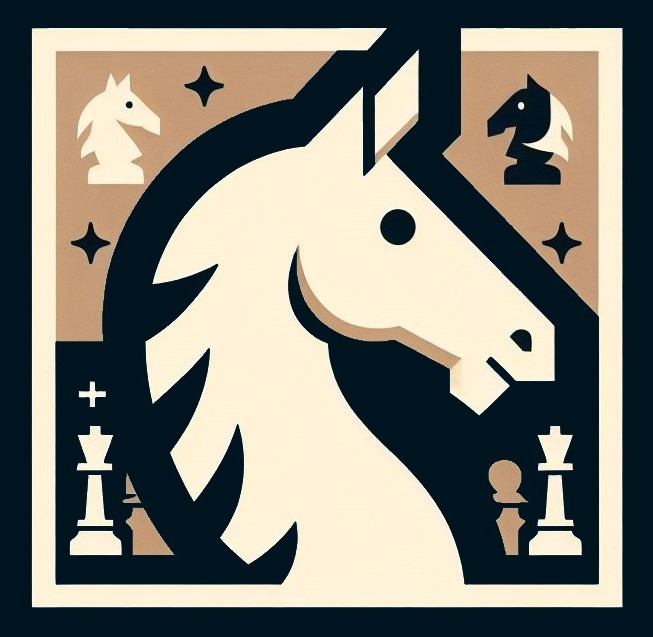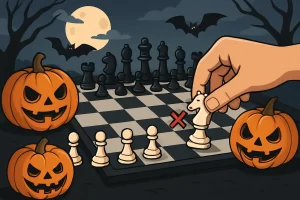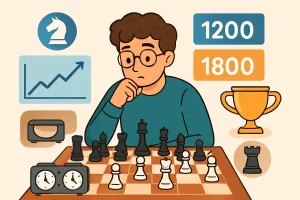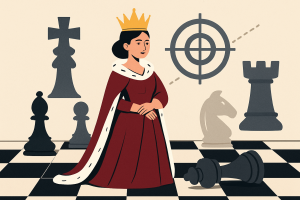Call us now:
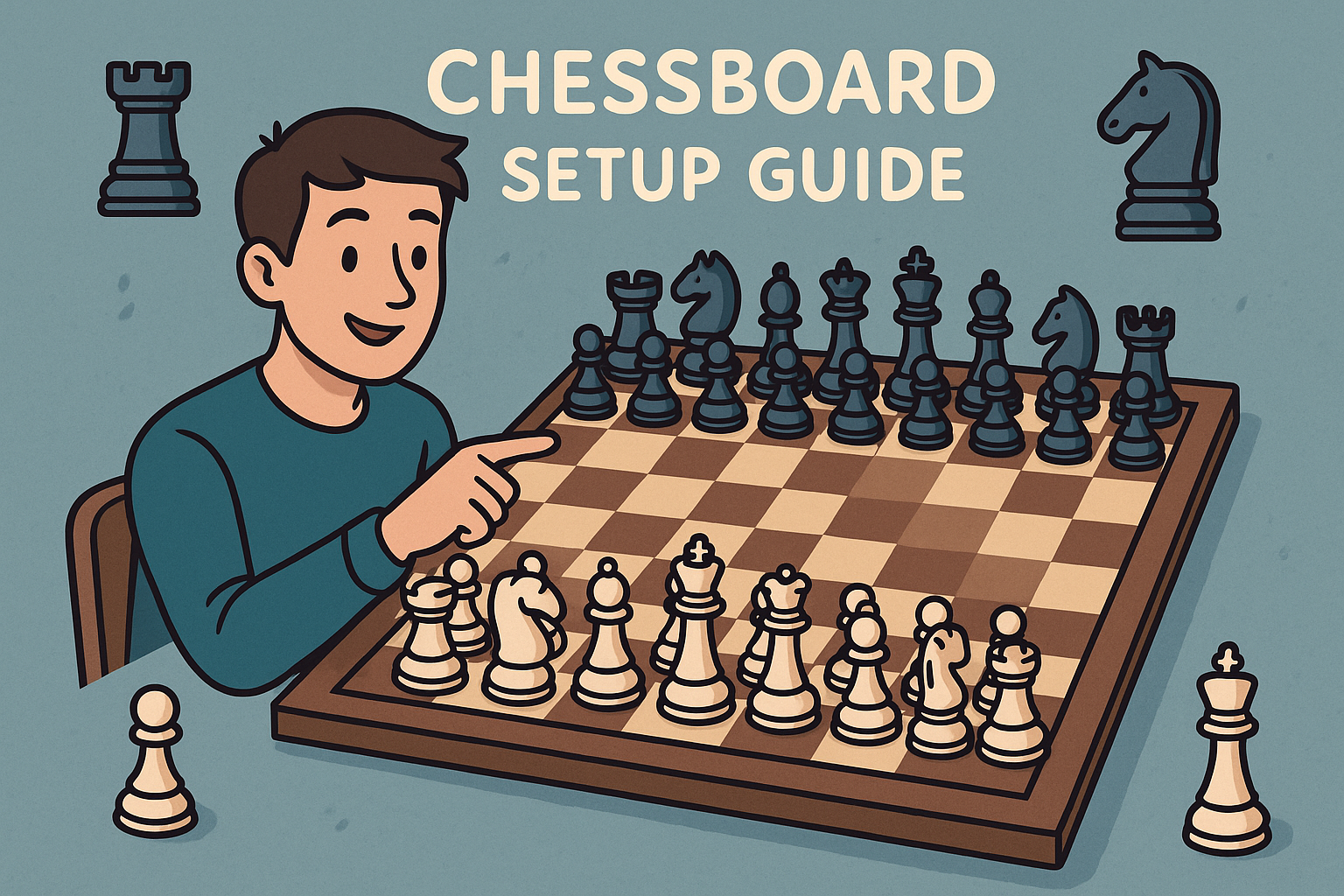
There’s a rare kind of intensity you see at the start of a chess match—the hush of the tournament hall, every board gleaming with perfectly placed pieces, intense eyes locked on the squares, and a quiet confidence radiating from those who know they’ve gotten the foundation right. “Proper chess board setup” isn’t a formality; it’s the ritual that launches the battle, the simplest but most fundamental assertion of mastery. Too often underestimated, getting the setup wrong can cost a game before a single move is played.
I’ve spent countless hours hunched over boards from club nights in smoky back rooms to grand tournaments under a hundred cameras, and the setup is always a sacred moment for the professional. In this article, I’ll break down the chess board setup with the eyes of a devoted insider. We’ll go deep—move-by-move, square-by-square, myth-by-myth. This isn’t just about how to set up a chess board; it’s about understanding why every detail matters.
You’ll find diagrams, pro-level tips, behind-the-scenes context, and even the emotional resonance of that first touch of the knight. Whether you’re assembling a board for the very first time or tightening your craft for top competition, you’ll emerge with confidence, clarity, and a few secrets only the serious players know.
The Chess Board: Anatomy, Dimensions, and Orientation
Before you even touch the pieces, you must respect the board itself. The 64 squares—eight rows (called “ranks”) and eight columns (“files”)—are the stage upon which every chess drama unfolds. The setup begins with precise orientation, and even a single turned board can create confusion, or worse, compromise a fair game.
Proper Chess Board Layout and Direction
- White square on the right: Every tournament director and seasoned player knows this golden rule: “White on right.” When you’re sitting at the board, the corner square closest to your right hand must always be a light (white) square. If you’re at an event and see a board set the other way, you’ll earn instant respect for quietly rotating it—always a subtle sign of experience.
- Files and ranks:
- Files: Labeled a through h, from left to right from White’s perspective.
- Ranks: Numbered 1 (closest to White) to 8 (closest to Black).
- Coordinate system (“algebraic notation”): Essential to follow games, study grandmaster matches, or record your own. E.g., e2–e4 is White’s king’s pawn advancing two steps.
| Position | Algebraic Name |
|---|---|
| Lower right | h1 (White’s corner) |
| Upper left | a8 (Black’s corner) |
Quick test:
- Sit down. Is the white square on your right? If not, pause—swap the board.
Chess Board Dimensions
- Competitive standards (used in most tournaments): Each square between 50–60mm (about 2–2.4 inches); full board roughly 17–20 inches square.
- For home play, sizes vary widely, but ensure each piece fits comfortably on its square.
Arranging Chess Pieces: The Complete Step-by-Step Setup
Placing the pieces isn’t mindless routine. It’s symbolic, almost theatrical—the reset button before every new story begins.
1. Begin with an Empty Board
Visualize the battle: Every square is empty possibility. This mental “clean slate” improves focus, especially for beginners learning chess piece arrangement.
2. First Row (Back Rank): Major and Minor Pieces
A. Rooks in the Corners
- On a1, h1 (for White); a8, h8 (for Black).
- “Castles” in the fortress—defensive guardians.
- Mnemonic: “Rooks rule the corners.”
B. Knights beside the Rooks
- b1, g1 (White); b8, g8 (Black).
- Shaped like horses—remember the phrase, “horses hop on b and g.”
C. Bishops next to Knights
- c1, f1 (White); c8, f8 (Black).
- The “chaplains” of the army—long-range strategists, quietly powerful.
D. Queen on Her Color: A Crucial Rule
- White queen on d1 (white square), black queen on d8 (black square).
- Chant it quietly as the pros do: “Queen on her color.”
- Common beginner mistake: Placing the queen on the wrong square leads to mix-ups—from casual games at the park to amateur tournaments!
E. King on the Remaining Square
- White king on e1, black king on e8.
- The center of it all, literally and figuratively.
| Piece | White’s Rank 1 | Black’s Rank 8 | Placement Mnemonic |
|---|---|---|---|
| Rook | a1, h1 | a8, h8 | “Rooks rule the corners” |
| Knight | b1, g1 | b8, g8 | “Horses hop on b and g” |
| Bishop | c1, f1 | c8, f8 | “Bishops beside the horses” |
| Queen | d1 | d8 | “Queen on her color” |
| King | e1 | e8 | “King steps aside the queen” |
3. Second Row (Pawn Rank)
- All squares in front of the main pieces are lined with pawns: a2–h2 for White, a7–h7 for Black.
- Pawns are the foot soldiers—humble, but games are won and lost by their courageous advances or tragic errors.
4. Mirror for Black’s Side
- The arrangement is a reflection—Black’s army is set on ranks 7 and 8, directly opposing White’s formation.
Chess Board Setup Diagram
Let’s visualize White’s perspective; Black’s is mirrored above.
8 | r n b q k b n r7 | p p p p p p p p6 | . . . . . . . .5 | . . . . . . . .4 | . . . . . . . .3 | . . . . . . . .2 | P P P P P P P P1 | R N B Q K B N R a b c d e f g hLegend:
- Uppercase = White; Lowercase = Black.
Tip: Online, you can find interactive chess board setup diagrams for practice (search “chess board setup online”).
For Complete Beginners: Step-by-Step Chess Board Setup
If you’re brand new, here’s the “quick-start” setup in bullet form:
- Lay out board: White square at bottom-right.
- Place rooks on all four corners.
- Add knights next to the rooks.
- Bishops go beside the knights.
- Queen goes on her own color (white square for White, black square for Black).
- King goes on the remaining central square.
- Fill in the entire row in front of pieces with pawns.
- Double-check symmetry with your opponent’s side.
Bonus: Print a chess board setup chart, or draw your own guide—studies show that physically arranging and labeling the board cements setup in memory.
Chess Board Setup Rules: Tournament Standards & Common Mistakes
Competitive chess has strict setup rules, primarily enforced to guarantee fairness and clarity. A single misorientation can nullify a game.
Orientation Rules and Official Chess Board Setup
- Rulebook Mandate: “The chessboard is placed so that the square in the bottom right corner is a light square.”
- Piece Arrangement: Each player’s pieces occupy the first two ranks in mirror-image.
- Notation Board: For tournaments, boards are labeled with a–h and 1–8 along the sides—the white pieces’ first rank is row 1.
Frequent Beginner Blunders
- Queen on the wrong square: The classic error—White queen on a black square, or vice versa. The mnemonic “queen on her color” combats this.
- Mixing up bishops and knights: Their shapes are similar, especially in wood sets. Knights always go next to rooks.
- Board the wrong way around: If your rook isn’t in the bottom right corner and/or your queen is not on her color, the board is not set properly.
- Chess pieces facing the wrong direction: Pieces should always face your opponent, never sideways.
- Chess clocks placed on the wrong side: Clock goes to the right of the player with Black pieces.
True Story: The Setup That Settled a Tournament
In a famous club match, two players began, each absolutely certain his queen faced the right direction. Ten moves in, confusion over notation led to a dispute. When the TD arrived, both players were penalized for improper board setup—a costly lesson, and neither forgot it.
Chess Board Squares Names: Algebraic Notation, Visuals, and Pattern Recognition
Each chess square is a unique address, a coordinate in the “city” of chess; mastery of their names is the silent secret of professionals.
How the Chessboard’s Notation Works
- Vertical columns: called “files” (a–h, left to right from White’s view)
- Horizontal rows: called “ranks” (1–8, bottom to top from White’s view)
- Each square: identified by its file letter and rank number, e.g., “e4” (middle of board).
| Chess Square | Board Position | Example Piece Start |
|---|---|---|
| e4 | Center | (frequent first pawn move) |
| h1 | Bottom right | White rook start |
| d1 | Center left | White queen start |
| c8 | Top left | Black bishop start |
Practice Tip: Repeating squares out loud or annotating your own moves accelerates memory.
Printable and Downloadable Chess Board Setup Guides
Visual learners or those teaching beginners (especially kids) benefit greatly from downloadable, printable guides. These can take the form of:
- Print-at-home PDFs: Marked with pieces, ranks, and files. Great for lesson plans or casual practice.
- Chess board setup posters: Ideal for club rooms or classrooms.
- Color-coded diagrams: Visually emphasize piece placement with vivid hues.
- Online interactive setups: Click-and-drag pieces for immediate feedback (sample resource).
Pro Tip: Bring copies to tournaments for juniors—nothing stings quite like a forfeit over an incorrect board setup!
Beyond the Basics: Chess Board Setup Variations and Historical Insight
While the standard chess board setup is universal in classical chess, many variations exist—some codified for entire games, others for opening preparation or creative practice.
Fischer Random (Chess960): The Setup That Scrambled the Status Quo
Chess960, also called “Fischer Random,” randomizes the back-row piece arrangement, keeping the king between rooks, and bishops on opposite-color squares. This shatters opening theory and rewards creative, nimble setup skills. Serious tournament players must learn to arrange and interpret these “wild” setups in seconds.
- No two games may start the same in Chess960; mastery of proper chess piece arrangement unlocks freedom for attacking minds.
Historical Trivia: The Board Itself Used to Vary
Travel back through centuries and you’ll find legends playing with embroidered cloths, animal-horn pieces, or homemade boards marked by candle-smoke! Before formal standardization, regional variations affected starting positions. Even today, formats like Capablanca Chess (with two knights, two bishops, and a wider board) encourage fresh exploration.
Advanced Tips: Pro Secrets for Board Setup and Psychological Edge
Setup isn’t just practical—it’s a psychological moment, too. Here’s how expert players elevate the act:
1. Ritualized Setup: Preparing the Mind
Top professionals use the setup as a final visualization—mentally rehearsing early moves as they place each piece. Some grandmasters start with the king; others, in deliberate opposition, with the queens. These personal rituals are about calming the nerves and focusing the mind.
2. Quick Setup under Pressure
In blitz and rapid play, seconds count. Mastering muscle memory—always placing knights efficiently, always checking the bishop color—can save precious seconds at the start.
3. Spotting Subtle Setup Errors in Opponent’s Arrangement
A skilled player, seeing an opponent’s queen misplaced or the board rotated, instantly gains respect and occasionally even a psychological edge. Gentle correction is good etiquette—but it’s a moment to gauge your opponent’s preparation.
4. “Double-Check” Tactic Before Move One
Every serious competitor reviews:
- Are both kings and queens on their correct squares?
- Board orientation: white on right?
- Pawns filling the front?
- Chess clock placed on the correct side?
It sounds basic, but even experienced players have, in time-pressure or nerves, committed set-up blunders.
5. Using Setup for Early Pattern Recognition
Glance at the starting position and envision the classic pawn structures—think of the Queen’s Gambit, King’s Indian, or Sicilian. Each setup primes the brain for the opening dance.
Frequently Asked Questions (FAQs): Chess Board Setup
Which side does the queen go on in chess?
The queen always goes on her own color. White’s queen sits on the white square (d1), Black’s queen on the black square (d8).
What’s the proper orientation for the chess board?
Place the board so each player has a white square (h1 for White, a8 for Black) on their right-hand side.
How are chess pieces set up at the start?
First rank (nearest each player): rook, knight, bishop, queen, king, bishop, knight, rook (from a–h).
Second rank: all pawns.
How do you use the board’s numbers and letters?
The chessboard’s ranks (1–8) and files (a–h) are used for move recording and studying games. E.g., “e2–e4” describes moving the pawn in front of the king two steps forward.
What’s the most common beginner mistake in setting up the chess board?
Either misplacing the queen (not matching her square’s color) or orienting the board with a dark square on the bottom right.
Do online chess sites set up the board automatically?
Yes, but always learn the setup for over-the-board play—tournaments demand it!
How do you set up a chessboard for a tournament?
Follow the classic setup rules, and always double-check orientation, piece order, and placement under the supervision of tournament officials.
Key Takeaways: Proper Chess Board Setup
- “White square on right”—the cardinal rule.
- Queen matches her own color.
- Major pieces arranged from outside in: rook, knight, bishop, then queen and king.
- Pawns line up in front, creating the “front line” for each army.
- Files labeled a–h (left to right); ranks 1–8 (bottom to top).
- Setup accuracy avoids disputes, confusion, and costly in-game errors.
Final Thought: The Power of Ritual
The act of arranging a chessboard is simple, but it resonates with centuries of tradition and the promise of endless battle. Grandmasters and new players alike share a certain reverence as pieces settle onto their squares, a sense that something significant—peaceful yet deadly—is about to unfold.
Getting the chess board setup right isn’t just rote mechanics; it’s chess in its most honest form—respect for the game, your opponent, and the shared pursuit of mastery. Every time you lay out the board, you participate in a lineage stretching back through café masterminds, prodigies, and world champions. Do it with pride, precision, and passion.
So next time you set up your chess board, don’t rush. Feel the echoes of history, the anticipation of possibility, and settle into your seat as you join the grand narrative—one perfect square at a time.
